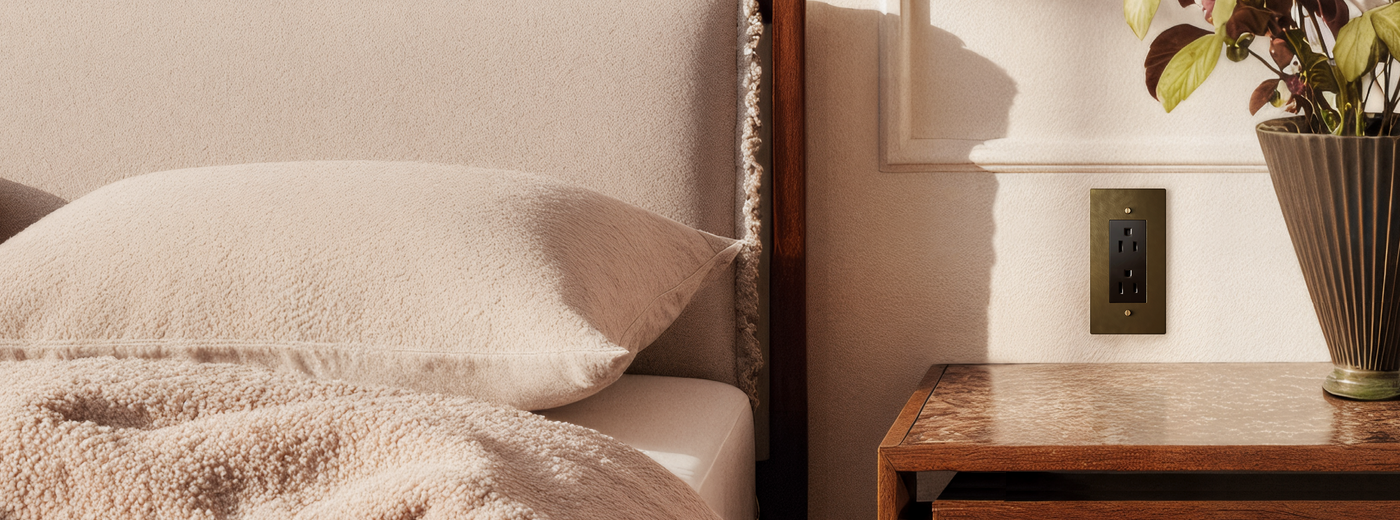Electrical Outlets
Up the beautification game of your house with our premium Brass Electrical Outlets. It is the definition of refined aesthetics and durability. These are crafted with high-quality material and hence secure. It can be designed for a futuristic or a mundane classic look. You can trust its reliable functionality.
Flaunt the Elegance of Electrical Outlets
Did you know that your often ignored electrical outlets can add a certain class of aesthetics to your home? Our premium electrical outlets are crafted from high-quality brass that gives a certain power to your place. The best aspect of the shiny brownish brass is that it blends well with both modern and classic interior designs. What’s even better is the natural brass patina that give it a level of sophistication, while fulfilling its functional duties. We are aware of the gamut of electrical products, each with its own demand for power outputs, and hence our collection offers a range of standard, USB-C, and GFCI options to complement your home’s design and power needs. But our brass electrical outputs and receptacle are more than just functional elements in a space, they are stylish accents that help you flaunt your space.
Shop Modern Lamp Lighting
- Lamp Styles: Modern Floor Lamps | Modern Table Lamps | Metal Table Lamps
- Brass & Design: Brass Light Fixtures | Modern Brass Floor Lamps | Modern Brass Table Lamps
- Ideas & Inspiration: Modern Floor Lamp Ideas | Trends in Modern Floor Lamps | How to Use Brass Table Lamps | Styling Brass Floor Lamps | Unique Standing Lamps
Why Choose Electrical Outlets?
After all who looks at electrical outlets as décor items? The electrical outlets available with us are the definition of style and substance. As they are constructed with premium brass, they are light, robust and reliable. Brass structure also has an elegance to them.
Key Features of Electrical Outlets
- Tamper resistant as constructed with premium solid brass
- Options available - standard, USB - C, and GFCI options
- It blends well with various décor styles
- Built for long-lasting durability
How To Integrate Electrical Outlets Into Your Home
There are several times when you can choose our designer electrical outlets. While renovating the whole space, replacing existing outlets or other time. Our designer electrical outlets will blend without effort to your existing décor or to the new one. So, here’s how you can integrate them:
- Often overlooked, integrate the electrical outlet to your kitchen and bathroom.
- Regular mundane living spaces can be given a more refined look with brass switch plates.
- Try to blend them with existing hardware to form a cohesive design.
Care and Maintenance Tips For Electrical Outlets
Designer electrical outlets need to be cared for to maintain its quality and finish. Here are some simple care and maintenance tips:
- Do not let dust buildup on the design. Always use a clean dry cloth while cleaning around electrical outlets. Ensure that it is done regularly.
- Do not use harsh or abrasive cleaners on the brass and its cover plates. It may hamper its finish, especially the patina.
- In case you feel there is any issue with its functionality, check for installation issues.
- Avoid moisture around the outlet and wall plate to prevent rusting.
- Do not try to force plugs and pins into the outlet.
- Be mindful of the outlet overheating. Warmth on or around it could indicate any wiring issues.
Final Thoughts
At Residence Supply, we make sure that our electrical outlets are not only durable and functional, but also blend with the décor of the space you intend to fix it in. The designer electrical outlets might be just the thing that your house / space needs. Explore our collection today and find the ideal outlets to use for your space.




















































































































































